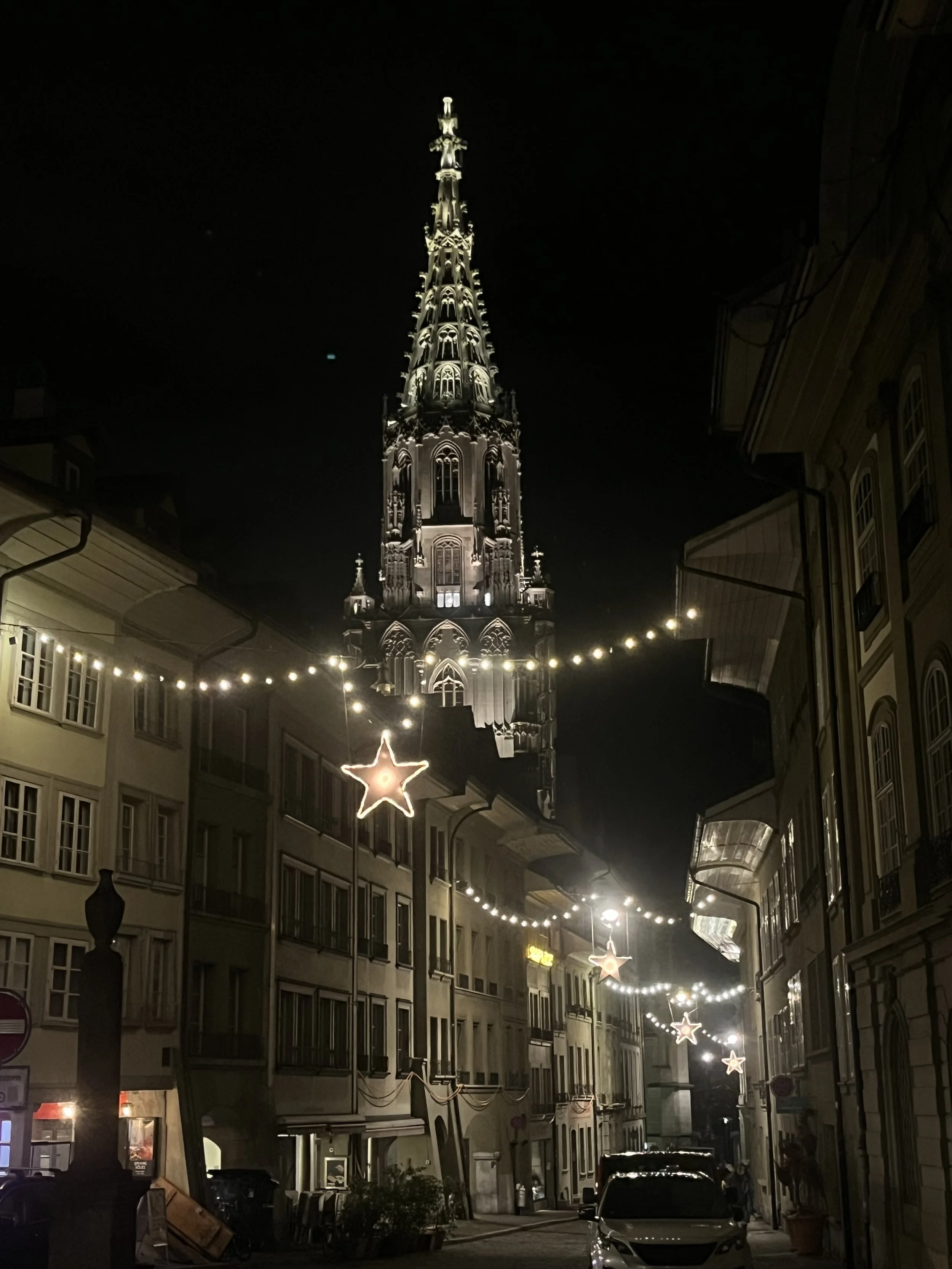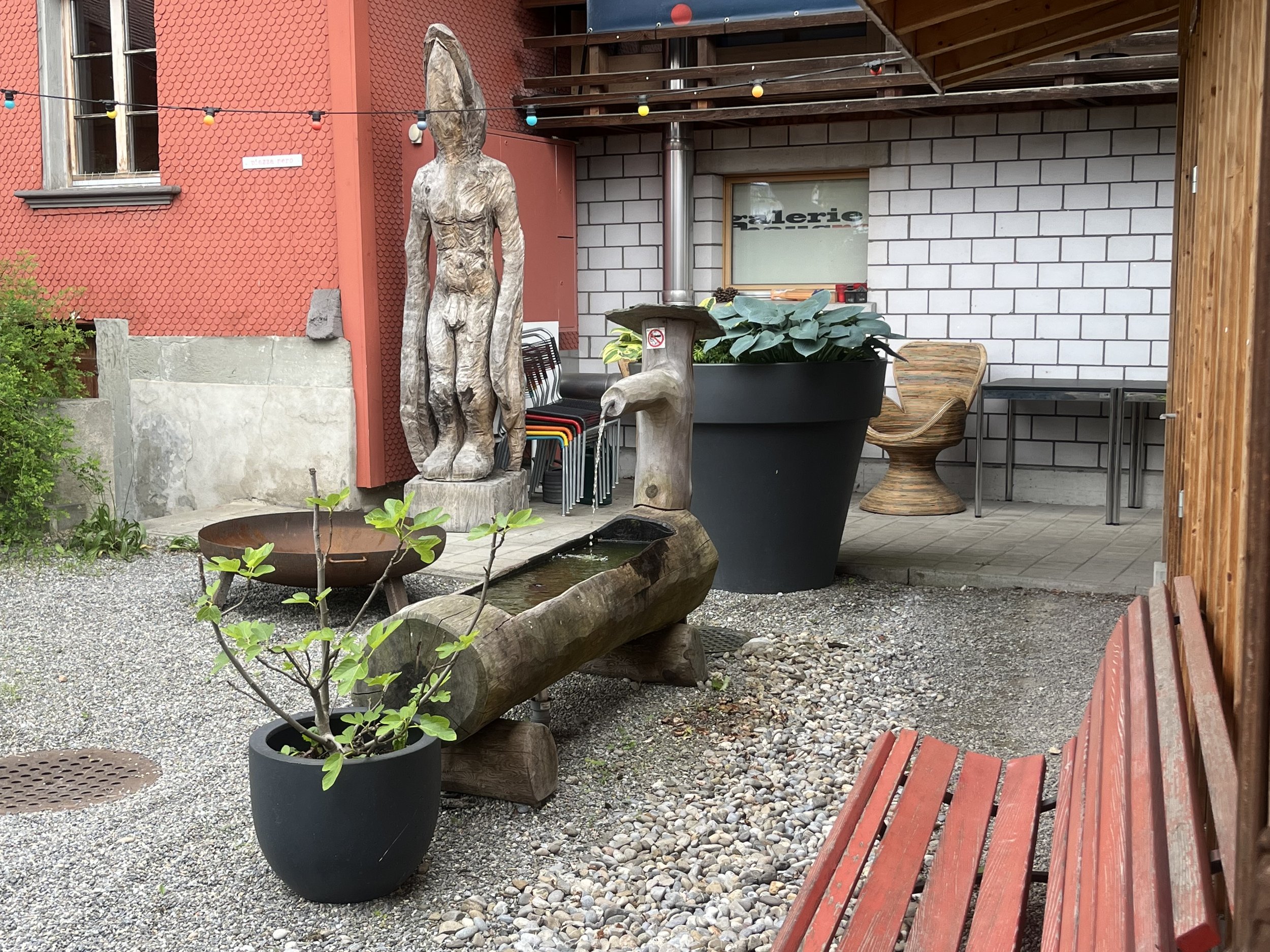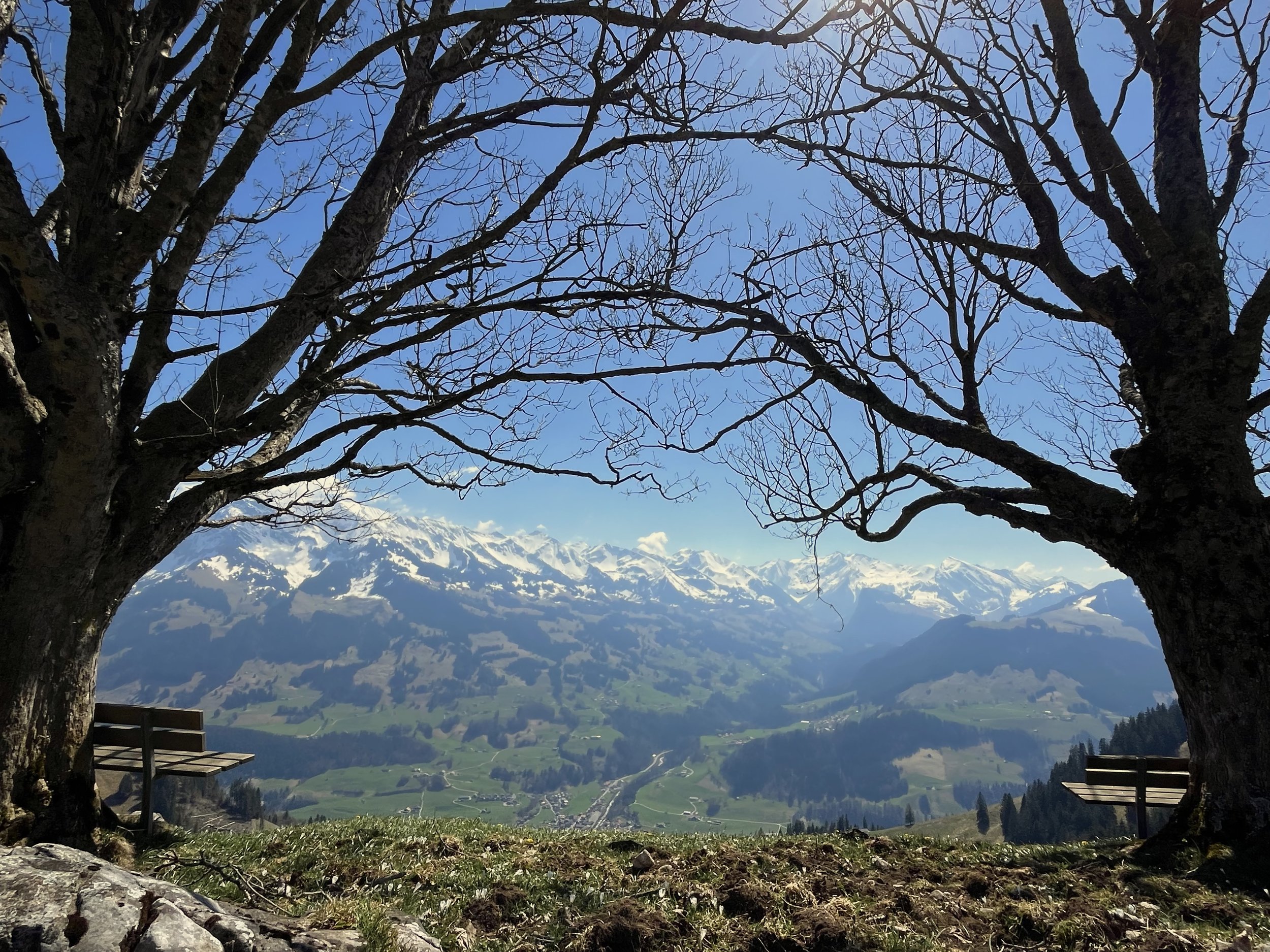Like the history of any place, Bern’s story doesn’t begin exactly where it stands. It starts just to the north, in what is now Germany, on the edge of the Black Forest, in a village called Zähringen. That’s where a powerful duke named Berchtold V decided he wanted more, more land, more influence, more bragging rights.
So, in the year 1191, ole Berchtold saddled up with his crew and set off in search of the perfect spot to build a brand-new city. Through the dense and mountainous forest of what is now called the Black Forest of Germany they rode south, until they reached a mighty river, (what is now called the Aare), and followed along it for roughly 110km along its curves.
This is a map based off what I could find representing the actual route taken.
Suddenly, the river looped into a sharp U-turn around a steep peninsula. Jackpot. The steep rise in the land offered natural protection from invaders, besides from a natural moat, the river gave easy access to fresh water and fish, the woods meant plenty of timber and the land was fertile enough to support a growing settlement. In short: it was everything a medieval duke could hope for.
And then there’s the legend, the one that says Berchtold promised to name the city after the first animal they killed on that land. That animal turned out to be a bear, or Bär in German. And so the city was named Bern (Bärn). The bear stuck around too, you’ll still find it on the city’s coat of arms, on fountains, and even in the city’s own bear pit (yes, that’s a thing).
But founding a city wasn’t all victorious hunting and scenic river bends. Bern grew slowly and life was tough. The early townsfolk wrote about brutal winters, devastating fires and the occasional skirmish. After Berchtold’s family line died out, Bern was left without a ruling duke, and instead of inviting in a new one, the locals took a bold step. In 1218, Bern declared itself a free imperial city of the Holy Roman Empire. That meant it answered only to the emperor himself (and sometimes not even him), not to any meddling local lords. It was an early taste of independence and Bern liked the flavor.
And while it may have started as a modest riverside outpost, Bern didn’t stay small for long. It got strategic, expanding its territory via alliances and gold. And when the gold want enough, through occasional military conquest. Gaining a reputation for being the city that punches way above its weight, ruling large parts of western Switzerland.
Then came the Great Fire of 1405,which kindly offered the city a blank canvas by turning about a third of it’s wooden structures into ash. Most places would rebuild cautiously. Bern, however, took one look at the smoldering ruins and said, “You know what would look great here? A 100-meter-tall cathedral tower.” And just like that, one of the most ambitious building projects in Swiss history kicked off. The city brought in top-tier talent, Matthäus Ensinger from southern Germany and in 1421, construction began on what would eventually become the Bern Minster. It only took... 470 years. (Turns out, Swiss efficiency has its limits when it comes to cathedrals.)
By the 15th century, Bern had grown into a modest little metropolis of about 5,000 souls, a few cows, plenty of gardens, and an urban layout that could generously be described as “rustic.” Think cobblestones, wooden buildings and the pungent waft of livestock. Bern was wearing its wealth and confidence like a particularly ornate robe.
The Protestant Reformation hit Bern in 1528 like a theological thunderclap between Catholics and Protestants. Suddenly, altars were out, pulpits were in, and the organ (literally) stopped playing. Holy images were smashed, relics chucked out, and the choir stalls swapped for a baptismal font—because nothing says “radical religious shift” like moving the furniture. It was, in essence, Switzerland’s most sacred home renovation.
Through these events—its founding, political autonomy, territorial growth, rebuilding, and religious transformation—Bern developed a unique identity: pragmatic, independent, and deeply civic-minded. Today, its old town is a UNESCO World Heritage Site, its bear symbol remains proudly visible throughout the city, and its winding Aare River still hugs the land that first inspired its founding over 800 years ago.




